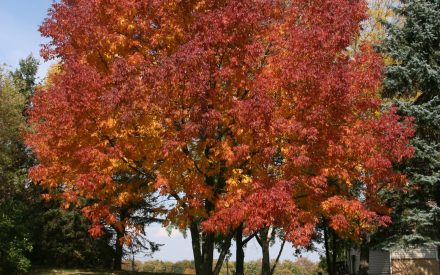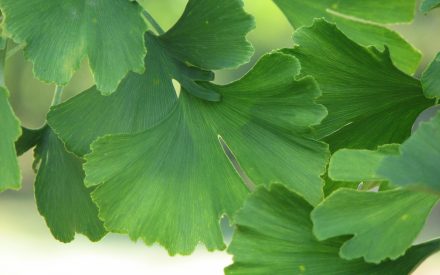Pest Alert
Authors: PJ Liesch and R. Chris Williamson, UW Entomology
Last Revised: 04/07/2022
X-number: XHT1185
Emerald ash borer insecticide treatment considerations. A variety of insecticide products and application methods are available to professionals for control of the emerald ash borer (EAB). Since the presence and infestation level of EAB is quite difficult to determine at early stages of an infestation, insecticide treatments may be merited to prevent and mitigate damage by EAB. However, not all ash trees should be treated as some may be too extensively compromised or in poor condition to receive treatment. Due to the expense of yearly insecticide treatments, one should consider the value of a particular ash tree in relation to insecticide treatment costs before making any treatments. In addition, consider the health of each tree before treating. Research suggests that insecticide treatments are significantly more effective on EAB-infested ash trees with less than 50% canopy thinning. Insecticide treatments are not suggested for trees with greater than 50% canopy thinning. Ash trees with greater than 50% canopy thinning should be removed and destroyed in accordance with established local, state and federal guidelines. For additional information on this topic, see University of Wisconsin Garden Pest Alert XHT1215, Is My Ash Tree Worth Treating for Emerald Ash Borer.
Emerald ash borer insecticide treatment options. Insecticide products that are available for use by professionals, with information on appropriate application methods and application timings, are summarized in Table 1. These products include:
- Ace-Jet [acephate]
- ACECAP Systemic Insecticide Tree Implants [acephate]
- ArborMectin [emamectin benzoate]
- AzaGuard [azadirachtin]
- Bifen XTS [bifenthrin]
- Boxer Insecticide-Miticide [emamectin benzoate]
- GCS Bifenthrin 2EC [bifenthrin]
- IMA-jet, IMA-jet 10 [imidacloprid]
- Imicide, Imicide HP [imidacloprid]
- Lalguard AZA [azadirachtin]
- Mallet (2F, 75 WSP) [imidacloprid]
- Mectinite [emamectin benzoate]
- Merit (2F, 75 WP, 75 WSP) [imidacloprid]
- OnyxPro [bifenthrin]
- Pointer [imidacloprid]
- Safari [dinotefuran]
- SymTREE EB [emamectin benzoate]
- Tempo Ultra (WP, WSP) [cyfluthrin]
- Transtect [dinotefuran]
- Tree-äge G4, Tree-äge R10 [emamectin benzoate]
- Treeazin [azadirachtin]
- TreeMec Inject [emamectin benzoate]
- Xytect (2F, 75 WSP, 10% infusible) [imidacloprid]
- Zylam [dinotefuran]
University research indicates that soil drenches or injections of imidacloprid provide excellent EAB protection for small ash trees [less than six inches diameter at breast height (DBH)] in the first year following treatment. Larger trees may require two consecutive years of treatment before they are effectively protected. Thus, treatment of large trees should begin before the trees become infested. While spring and/or fall applications are allowed on certain product labels, recent university research has indicated that spring applications have been more effective at controlling EAB and protecting canopy health. Most insecticide treatments must be repeated each year. Products containing emamectin benzoate are labeled to provide two years of protection. Recent university research suggests that some of these products may provide three or more years of protection with a single application when used at the highest labeled rate.
Trunk injections and implants require physically drilling or coring into a tree during the application of the insecticide. Thus, use of these application methods has the potential to cause injury to trees (especially smaller trees) and may provide entry points for certain disease-causing pathogens [e.g., Nectria, the cause of Nectria canker (see University of Wisconsin Garden Facts XHT1094 Nectria Canker)].
Table 1. EAB insecticide treatments available to professionals*
| Active Ingredient | Product(s) | Timing | Application Method |
| Acephate | ACE-jet | Mid-May to Mid-June | Trunk injection |
| Acecap Implants | Trunk implant | ||
| Azadirachtin | Azaguard, Lalguard AZA, Treeazin | Early/Mid-April to early September | Trunk injection |
| Bifenthrin | Bifen XTS, GCS Bifenthrin, Onyxpro | Apply prior to or just at the time of adult emergence. Multiple applications may be needed. | Preventative bark and foliage cover sprays |
| Cyfluthrin | Tempo Ultra (WP, WSP) | ||
| Dinotefuran | Safari, Transtect, Zylam | Late-April to late-May | Soil-drench, trunk spray |
| Emamectin benzoate | ArborMectin, Boxer, Mectinite, SymTREE EB, Tree-äge G4, Tree-äge R10, Treemec | April to September | Trunk injection |
| Imidacloprid | Mallet (2f, 75 WSP), Merit (2F, 75 WP, 75 WSP), Xytect (2F, 75 WSP), and others | Mid-April to Mid-May and/or Early-Sept. to mid-October | Soil injection or drench |
| IMA-jet, IMA-jet 10, Imicide, Imicide HP, Pointer, Xytect 10% | Mid-April to Mid-May | Trunk injection |
The University of Wisconsin does not endorse any one specific commercially available insecticide. Products discussed in this fact sheet have been evaluated in a variety of university research tests on EAB (www.emeraldashborer.info/). No matter which insecticide you use, always read and follow all label instructions. Avoid skin contact with insecticides and safely store insecticides out of the reach of children.
For more information on controlling emerald ash borer:
See eab.russell.wisc.edu, datcpservices.wisconsin.gov/eab/ or www.emeraldashborer.info/, University of Wisconsin Pest Alerts XHT1181 (Homeowner Guide to Emerald Ash Borer Insecticide Treatments) and XHT1215 (Is My Ash Tree Worth Treating for Emerald Ash Borer).
Download Article





 Is My Ash Tree Worth Treating for Emerald Ash Borer?
Is My Ash Tree Worth Treating for Emerald Ash Borer? Homeowner Guide to Emerald Ash Borer Insecticide Treatments
Homeowner Guide to Emerald Ash Borer Insecticide Treatments Protecting Your Tree From Emerald Ash Borer
Protecting Your Tree From Emerald Ash Borer Ash Alternatives for Homeowners and Professionals
Ash Alternatives for Homeowners and Professionals


